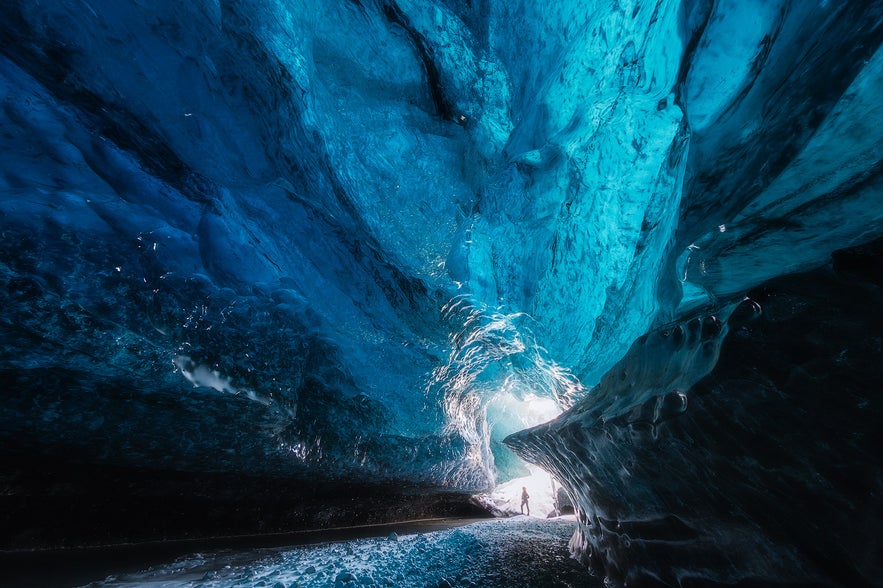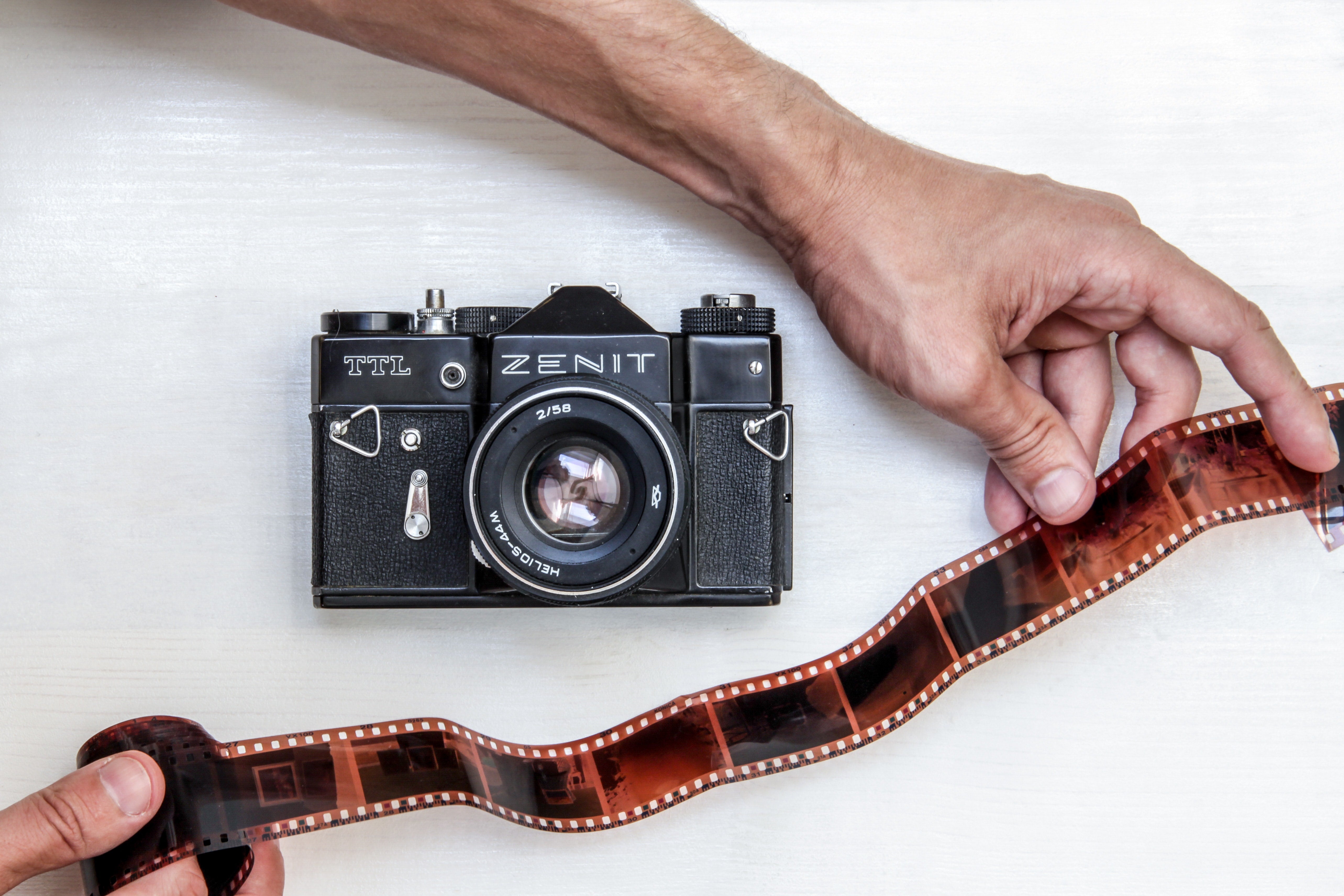
Ah, the beauty of brilliant blue ice caves, the elusive Northern Lights dancing overhead, majestic mountains, glorious glaciers and other amazing wonders of nature. Once you’ve developed the wanderlust for Iceland, it’s hard to dial it back. Since it’s taken a hold inside you, you’ve probably found yourself staying up late at night to delve into mounds of photographs online, looking at all of the incredible images that you could possibly bring home for yourself when you’re finally visiting this fiery and icy land.
- Check out these Camera and Gear Reviews
- See The Best Camera Gear Recommendations for Photography in Iceland
Like any other genre of photography, the success of the landscape photos that you’ve been looking at depend largely upon the lenses that were used to create the final product. So before you start packing your camera gear to begin your landscape photography trip, it’s important to think about what kind of lenses you will need to bring and how they will help you to achieve the look that you are striving for.
One question that we are often asked during our photo tours is, “which lens is the best for landscape photography”? The answer to that is that there is no one lens that is the absolute best, but rather, a range of lenses that might suit what you would like to achieve. Given that there isn’t one correct focal length to use for landscapes, it’s well worth investigating what types of lenses exist and how they will affect your landscape photography, before you end up making a huge purchase.
Choosing a lens or a particular focal length for landscape photography in Iceland is a topic that you should definitely research thoroughly before you make any big investments. When picking a lens, there are several things to consider, such as how much weight you will be able to carry in-field. Whether you’re out and about in the extreme terrain of the Highlands or slowly making your way between thunderous waterfalls on the south coast, nothing beats having a light backpack that still contains all of the gear that you will need to capture the unbelievable landscape around you.
So before you rush out to spend money (let’s face it, we all hate money and just want to get rid of it), let’s take a look at some different focal lengths and the reasons why they might be useful for you when you are out and about photographing the landscape in Iceland!
Wide Angle / Ultra Wide Angle Lens
 Wide angle lenses are common in landscape photography. Photo by: 'FuFu Wolf, Wikimedia Commons'.
Wide angle lenses are common in landscape photography. Photo by: 'FuFu Wolf, Wikimedia Commons'.
Wide angle lenses are the most-used lenses in landscape photography, not just in Iceland. In fact, the majority of landscape photos that exist are actually of the wide-angle variety. That is because the focal range of these types of lenses are incredibly dynamic, which makes them an essential part of your kit.
 A wide angle lens allows you to fit an entire mountain like Kirkjufell into your frame. Photo by: 'Iurie Belegurschi'.
A wide angle lens allows you to fit an entire mountain like Kirkjufell into your frame. Photo by: 'Iurie Belegurschi'.
The 14-35mm focal range is perfect for capturing everything from seascapes to cityscapes, architecture, interiors and all of the rest in between. You can fit an entire mountain like Kirkjufell into your frame. Alternatively, you can even get in close to your foreground interest, which exaggerates and emphasises this important element of composition.
Although lenses within this focal range can create distortion or skew the perspective of your shot, you can actually harness this aspect within your photos to produce more drama in your composition.
 Use a wide angle lens to exaggerate the foreground. Photo by: 'Iurie Belegurschi'.
Use a wide angle lens to exaggerate the foreground. Photo by: 'Iurie Belegurschi'.
The most exciting thing about using lenses within this focal range is that you’ll be able to fit a larger part of the scene into the frame, which is great for capturing stunning blue ice caves within Vatnajökull National Park or the vast black sand beaches and sweeping coastline of the south coast. This also means that you’ll be able to fit more of the sky into your photos, which is exactly what you want when you’re shooting the Northern Lights in Iceland.
 A wide angle lens is essential for photographing the Northern Lights in Iceland. Photo by: 'Iceland Photo Tours'.
A wide angle lens is essential for photographing the Northern Lights in Iceland. Photo by: 'Iceland Photo Tours'.
Standard Zoom Lens
 Standard zoom lenses are great for replicating what you see with the human eye. Photo by: 'Jwh, Wikimedia Commons'.
Standard zoom lenses are great for replicating what you see with the human eye. Photo by: 'Jwh, Wikimedia Commons'.
You might find that a lot of people say that a wide-angle lens is all you’ll need for landscape photography, but that isn’t always necessarily the case. Most of the time, you can take great photos of the landscape in Iceland with a standard lens of the 24-70mm focal range.
Standard zoom lenses allow you to see what’s around you at a similar range to the human eye. In fact, it’s generally accepted that the human eye sees at the equivalent of a 50mm lens.
The great thing about lenses within the 24-70mm focal range is that they allow you to have easy control over depth of field, which is good for showing a sense of scale. This means that you can often help to give the viewer a sense of place, as though they are actually there, in the scene, experiencing Iceland with you at that particular moment in time.
 Standard zoom lenses are great for wildlife photography. Photo by: 'Iurie Belegurschi'.
Standard zoom lenses are great for wildlife photography. Photo by: 'Iurie Belegurschi'.
Standard focal lengths are great for shooting scenes where you may need to crop out a distraction within the landscape, or for when you want to focus more on the subjects within your frame. Take this image for example of the beautiful Icelandic horses in winter. By cutting out all of the surroundings, you can allow the viewer’s eye to concentrate on the horses and to see them as a group rather than three separate entities. The result is a cohesive shot that makes the most of the area within the frame for an excellent composition.
Of course, standard zoom lenses are also great for when it’s impossible to get too close to your subjects, just in case you end up scaring them off or when there’s a barrier in place for your own safety, which is an important factor to consider when you are in the wild and oftentimes unpredictable nature of Iceland.
Telephoto Lenses
 A telephoto lens allows for intimate landscape photography. Photo by: 'Allupinc, Pixabay'.
A telephoto lens allows for intimate landscape photography. Photo by: 'Allupinc, Pixabay'.
People often baulk at investing in a telephoto lens because they can be huge and quite expensive. However, they form a very important range within landscape photography, particularly in Iceland, so let me explain why!
Telephoto lenses allow for intimate landscape work. Lenses with these types of focal range let you tighten your compositions by extracting just a portion of the scene, limiting the overall distractions. What you end up with can be very abstract, especially if you are concentrating on textures within something like a waterfall. However, sometimes there are certain factors that can prevent you from getting closer to something within the landscape, so you can use the extra length to zoom all the way in.
 Telephoto lenses are great for photographing puffins in Iceland. Photo by: 'Iurie Belegurschi'.
Telephoto lenses are great for photographing puffins in Iceland. Photo by: 'Iurie Belegurschi'.
Have you ever tried to photograph birds? Puffin photography is very popular in Iceland during summer, when the glorious glow of the Midnight Sun bathes the landscape in almost 24-hours of daylight. The puffins nest upon the cliffs along the coastline during summer, so you’ll have more than enough time to hop from one place to the next, capturing the personalities of these cute little birds in photos. However, if you get too close, you may spook them and cause them to fly away. That’s when the focal range of a telephoto lens can really come in handy.
 Telephoto lenses compress the scene to make things look closer together, such as here with the Reyinsdrangar Sea Stacks. Photo by: 'Iceland Photo Tours'.
Telephoto lenses compress the scene to make things look closer together, such as here with the Reyinsdrangar Sea Stacks. Photo by: 'Iceland Photo Tours'.
Telephoto lenses give you a little more room to work with, as they can compress the scene to make things look closer together. You can also isolate subjects, such as patterns in the distance (particularly when you are flying high above Iceland for aerial photography) to create interesting, abstract shots.
Whichever focal range you already have in your kit or decide to invest in next, it’s important that you test your lenses by practicing with different lengths in-field. You can practice while you’re at home on the weekend by going out into nature with your camera to learn how exactly your lens actually sees and captures the world around you.
When using different lenses, try taking photographs of the same subject while you are at the same distance away from it, but varying your focal length. You can even change your distance and do the same, so you can really get an idea of how the image changes.
By practicing landscape photography with different focal ranges, you will begin to see the world as your lens sees it, which will give you a different perspective on how to frame the landscape. This is a valuable skill to have before you come to Iceland, as it will improve your ability to compose in-field, as well as increase the diversity of your shots, leading to greater creativity – the overall result being a well-rounded landscape photography portfolio of Iceland that will knock your socks off… and hopefully those of everyone else around you.
About the author: Serena Dzenis is a landscape photographer based in Iceland. You can find more of her work on her website or by following her on Facebook and Instagram.
Are you ready to start packing for your photography vacation? Check out our range of photo workshops and tours, which will have you immersed in the world of landscape photography as you explore the Land of Fire and Ice.












